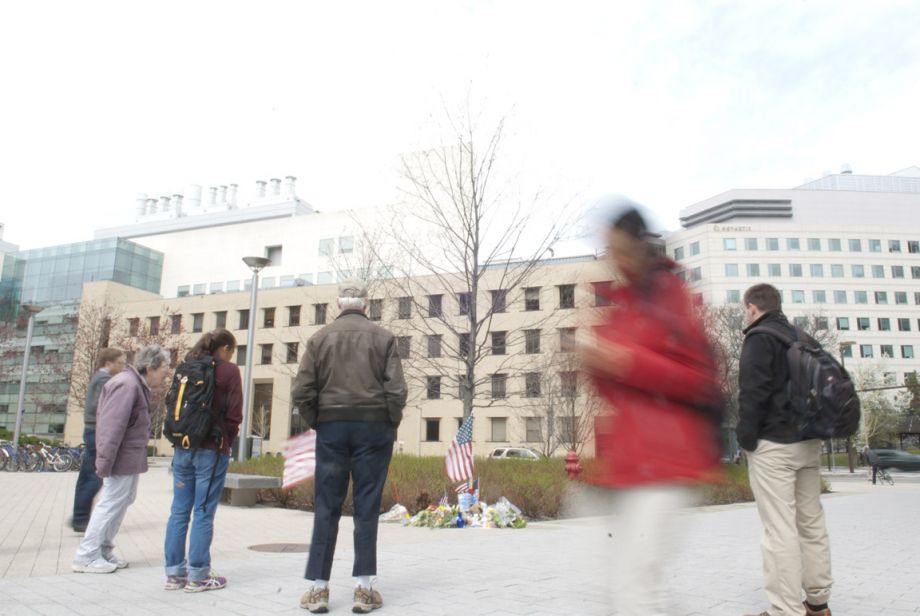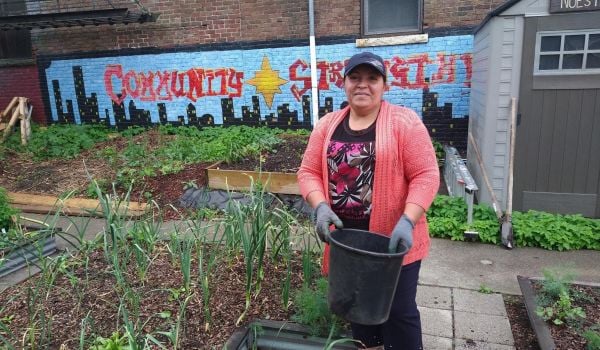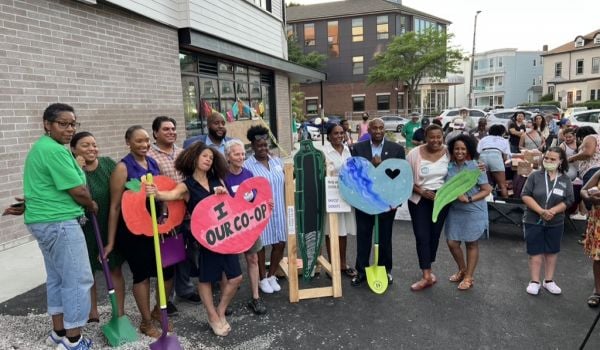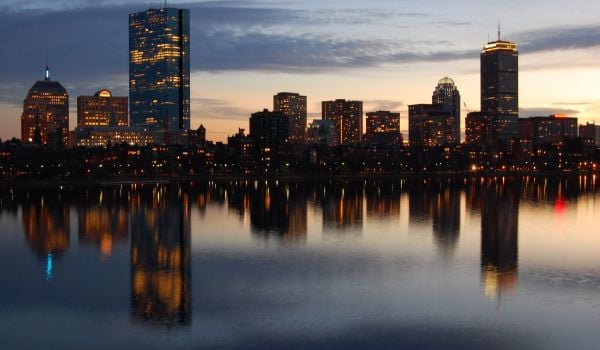Amid all the other news Friday morning was a likely overlooked story from space. Apparently, NASA has spotted three potentially life-supporting planets in a solar system 1,200 light-years away. They most likely contain water and are about the temperature of Earth on a warm spring day.
Friday was the first genuinely warm spring day in Boston this year. It was also the first time since another mild-weathered day in 2001 that I was told to stay inside, to “shelter in place.” By now, we all know the story: My city was on lockdown. Still, life and caffeine addiction go on, and I was out of coffee. So I took a walk to our nearest corner store, down a mostly empty street.
It was a strange walk studded with realizations of what my neighborhood looks like without the faces that usually draw my attention. There were things I pass everyday that I had never seen before. A cluster of low-slung row houses that had been standing for the last 100 years. Another home being built across the street — how had I missed the gap that must have been there before? There were flowers, of course, everywhere, and the cashier that sold me a jar of ground coffee gave me the sweetest, saddest smile I’ve seen in a long time. The only sound I heard as I walked home was wind in the trees, and my own footsteps. My neighborhood was peaceful.
But my city was as taught as a tight rope. I couldn’t begin to imagine the mental state of Dzhokhar Tsarnaev, wherever he was hiding during those 18 hours, but the ripple effects of his actions touched anxious homes all over Boston. Twisted proof that one person can make a big difference.
I’m currently an urban planning graduate student at MIT, where a lot of time is spent deciphering exactly what it is an urban planner does. Everyone you ask will give a different answer, but a common theme is this: We’re supposed to be the ones that see the big picture. We’re supposed to understand, and plan for, these ripple effects.
Last week, out of nowhere, a classmate began a contentious email campaign within the department. Our country is using drones to kill children in Afghanistan, he wrote. He vowed to spam us all with this news until we agreed, as a whole, to do something about it. Though his tactic was bewildering, the raw emotion of his conviction was palpable. It was decided on Sunday that we’d meet as a department on Wednesday to discuss how we, as planners, should deal with violence on a global scale. Then Monday happened.
When we convened two nights later, we went around the room, each person briefly describing how violence had touched his or her life. There were more than 50 of us, and the process took nearly an hour and a half. Typically, I find these everyone-in-the-group-says-something situations tedious. But this time was different. This time I drank it in, constantly attentive to each speaker, finding myself surprised by what each said. It slowly dawned on me that what I was witnessing was a room full of fiercely intelligent and capable people expressing an overwhelming sense of helplessness and vulnerability. If we all felt this way, surely that feeling was echoed in a remote village in Afghanistan, or in the Cambridge home of an immigrant family from a war-torn country.
After the go-round, the question loomed: What can we as planners do to help make peace in a violent world? And is it even our problem?
Many of us came to the department with a do-gooder mentality. We were motivated to pursue planning because we thought it could address the inequity we saw in the world. We felt (and feel) that structural inequality is at the root of societal problems we face on a daily basis, violence and despair among them. Planners are uniquely poised to bring a holistic approach to cumbersome and intractable issues like these. We’re systems thinkers. But we’re also positioned to see the contradictions. How can we strive to protect young people from violence when child labor produced the chocolate we ate at lunch? How can we oppose war over natural resources, when the product of such conflicts is powering the lights that illuminate our meeting? We’re tangled in negative externalities — again, the ripple effects.
But the role of the planner is to confront these contradictions head-on, to untangle the complex adaptive systems that are either broken or were simply built wrong in the first place. Inevitably, this means confronting entrenched power structures as well. Many of us will end up working for The World Bank, the U.S. government or any host of other major international players whose reach is global and whose actions reverberate immeasurably. As planners, we may serve as intermediaries between these power structures and the less powerful people they influence. Ideally, we will use the knowledge gained from both sides of the equation to guide decisions that improve the quality of life for everyone.
More likely, we’ll have to make decisions about policies and resource allocations that help some and hurt others. The challenge of this is two-fold: To understand the complex systems well enough to plan for unintended consequences, and to make sure the consequences won’t cause disruption or disenfranchisement that might lead a population to turn to violence as a means of protest, retribution or survival.
Of course, nothing was decided at this meeting. We were left to ruminate on the issues in small groups, scattering across campus. None of us assumed that in 24 hours, the violence would continue, this time arriving at our back door. I didn’t know MIT security officer Sean Collier, but my heart aches for his family and friends. He was four years my junior.
Deciphering the “why” behind the Boston Marathon bombing and subsequent manhunt will be a long and contentious task. For some, it will begin and end with the biography of the bombers themselves. But we should press further, and follow with a close examination of the global systems that foster inequality, breeding hatred and violence internationally. We as Americans and as planners especially must never stop considering the unintended consequences of the systems we live by. We must measure impacts and decide when and how to retool those systems that are broken, that allow for days like Monday to occur.
This may require a broadening of our perspective; to begin considering not only the quality of life in this country, but the quality of life for humanity as a whole. We need to zoom out, in other words, to confront the problem of violence on a global scale. Perhaps we could take a perspective of the astronomers, discovering a new planet 1,200 light-years away. How have those distant people gotten themselves into the mess they’re in? How could they begin to get themselves out?
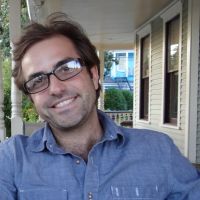
Andrew Cook is a photographer and writer. His work moves between fine art and editorial, focusing consistently on issues of contemporary urban life. He has published two books of photographs and contributes regularly to Next American City. Cook will be enrolled at MIT in the fall as a candidate for a Masters of Community Planning. Until then, he will be making sandwiches in the woods of Vermont.

